The timing of your Facebook posts can make a big difference in your reach and interaction. Facebook uses an algorithm that determines which posts appear in users’ timelines. By posting your content at the right time, you increase your audience’s chances of seeing and responding to your posts. In this guide, you’ll discover the best time to post on Facebook and how to optimize it for different niches.
- 1. Waarom de juiste posttijd cruciaal is
- 2. Beste dagen en tijden om te posten op Facebook
- 3. Hoe jouw doelgroep de timing beïnvloedt
- 4. Beste posttijden per niche
- 5. Hoe je jouw ideale posttijd bepaalt
- 6. Extra tips voor maximale zichtbaarheid op Facebook
- 7. Plan je Facebook-posts voor optimaal bereik
- 1. Meta Business Suite – ⭐ Beste gratis optie
- 2. Hootsuite – ⭐ Beste voor bedrijven met meerdere social media-kanalen
- 3. Buffer – ⭐ Beste budgetvriendelijke optie voor kleine bedrijven
- 4. Later – ⭐ Beste voor visuele content en Instagram-integratie
- 5. Sprout Social – ⭐ Beste voor grote bedrijven en geavanceerde analyses
- Welke tool moet je kiezen?
- Keuzehulp
- 8. Voorbeeldstrategieën per niche: Hoe plan je Facebook-posts slim?
- Conclusie
1. Why the right post time is crucial
Choosing the right time to post helps you to:
- Generate more interaction (likes, comments, shares).
- Increase your visibility in the news feed.
- Get more conversions when using Facebook for marketing or sales.
By making smart use of timing, you can turn the Facebook algorithm to your advantage and strengthen your online presence.
2. Best days and times to post on Facebook
In general, studies show that the best days and times to post on Facebook are:
- Tuesday, Wednesday and Thursday between 9 a.m. and 1 p.m.
- Friday between 10:00 and 11:00 a.m.
- Sunday evening around 7 p.m.
On Mondays, people are often busy with the start of the work week and on Saturdays they are more likely to be offline. However, this does not mean that these days have no potential; it depends on your target audience and niche.
3. How your target audience influences timing
Not every target audience is active on Facebook at the same time. Different age groups, professions and interests influence when and how often people use Facebook. If you want to be successful with your posts, it is crucial to understand when your specific target audience is online and what times are most conducive to engagement.
Age and usage patterns
- Young people (18-24 years old): This group uses Facebook less frequently than platforms such as Instagram and TikTok, but they are still active, especially in the evenings (8 p.m. – 11 p.m.). They often scroll through their feed after school or work and mostly comment on videos and trending content.
- Young adults (ages 25-34): This is one of the most active age groups on Facebook. They check their feed during breaks (12:00 – 1:00 pm) and after work hours (6:00 – 8:00 pm). This group is sensitive to ads and sponsored content, especially related to lifestyle, technology and travel.
- Adults (35-54 years old): Use Facebook for news, family updates and business networking. They are most active in the morning (08:00 – 10:00) and evening (19:00 – 21:00), when they have time to relax and check social media.
- Seniors (ages 55+): Older users are loyal Facebook users and spend more time per session. They are mostly online in the morning (08:00 – 10:00) and early afternoon (12:00 – 14:00), when they view their daily news and updates.
B2B vs. B2C: Different habits
The ideal posting time also depends on whether you are targeting a business (B2B) or consumers (B2C):
- B2B audiences (business users) are most active during business hours (09:00 – 17:00), peaking in the morning (09:00 – 11:00) when they start their day and between lunch breaks (12:00 – 13:30). Wednesday and Thursday are the best days to share business content.
- B2C audiences (consumers) use Facebook more after working hours (6:00 – 10:00 p.m.) and on weekends. Friday evening and Sunday evening are popular times to scroll and consider purchases.
International audiences and time zones
If you have an international audience, you need to take into account different time zones. It can be helpful to segment your target audience and plan separate posts for different regions. For example:
- Europe: Most active times are between 12:00 and 14:00 and 19:00 and 21:00.
- United States: Peak hours are 07:00 – 09:00 and 18:00 – 22:00, depending on the region.
- Asia: Mainly active in the evening hours (8:00 pm – 11:00 pm), depending on work and study patterns.
Use a social media scheduler such as Hootsuite or Buffer to automatically schedule posts for different time zones and achieve maximum impact.
Seasons and trends influence activity
Seasons and trends can also affect when people use Facebook. For example:
- During the summer months, people are less active during the day and scroll more often in the evening (9 p.m. – 11 p.m.).
- In the winter, especially around holidays, users spend more time online and are more likely to respond to promotions and discounts.
- Major events such as Black Friday, Christmas or sports tournaments can temporarily affect Facebook usage.
By properly analyzing your audience and using Facebook Insights, you can determine the perfect post time. Test different times, look at engagement and optimize your strategy based on real-time data. That way you reach your audience exactly when they are most active and engaged!
4. Best post times by niche
E-commerce and online stores
For web shops, it is ideal to post during lunch breaks (12:00 – 1:00 p.m.) and in the evening (7:00 – 9:00 p.m.). Many people scroll through Facebook during their breaks and after work, making them more likely to click through to your website and make a purchase. On Sunday evening, people are often in a buying mood, making it an excellent time to promote offers.
B2B and business services
For businesses that cater to professionals and business clients, the best time to post is during business hours, especially between 9 a.m. and 11 a.m. Many professionals check Facebook in the morning before their workday actually begins. Wednesday and Thursday appear to be the best days because people are more productive and open to business content in the middle of the week.
Health and fitness
Fitness- and health-related content does well early in the morning (06:00 – 08:00) and in the evening (18:00 – 20:00). People who exercise or want to live healthier lives often seek inspiration before they start their day or right after work. Mondays and Sundays are popular days to post because that is when people are motivated to start their week off right.
Entertainment and media
For entertainment pages, such as news, memes and pop culture, evening hours (8 p.m. – 11 p.m.) and weekends work best. People relax then and have more time to scroll through content and respond to it. Friday nights and Saturday nights are especially effective for viral content.
Travel and tourism
The best times to post travel-related content are Wednesday and Thursday between 11 a.m. and 1 p.m. and Sunday evening around 8 p.m. Many people then dream about their next trip and seek inspiration. Sunday evening is particularly good for promotions because that’s when people make plans for vacations and weekend trips.
Local businesses and restaurants
For restaurants and local stores, lunch and dinner times (12:00 – 2:00 p.m. and 6:00 – 8:00 p.m.) work best. People then actively search for dining options or special offers. Friday afternoon and Saturday evening are the best times to promote weekend deals or last-minute reservations.
5. How to determine your ideal posting time
While there are general guidelines for the best time to post on Facebook, it is important to remember that each audience is unique. The interaction with your content can depend greatly on your specific niche, target audience, and the nature of your posts. Therefore, it is essential to experiment and analyze your own data. Below is a step-by-step approach to determining the perfect post time for your Facebook strategy.
1. Use Facebook Insights to analyze your follower activity
Facebook Insights is a powerful tool that helps you understand when your followers are online and how they interact with your content. To do this:
- Go to your Facebook Business page and click on “Insights.”
- Look under “Posts” and check the “When your fans are online” tab.
- Analyze which days and times your followers are most active.
💡 Tip: Don’t just look at activity on a specific day, but study patterns over a longer period of time (at least a month). This will help you notice seasonal or weekend trends.
2. Try different times and test engagement
Now that you know when your followers are online, it’s time to try out different post times and measure how your audience responds. You can do this through a simple A/B test:
- Post on different days and times and compare engagement statistics (likes, reactions, shares, and clicks).
- Note the performance of each post to identify patterns.
- Test variations, such as a morning post versus an evening post, to see what works better.
💡 Example:
If you run an e-commerce business, you can post an offer on Tuesdays at noon and Fridays at 7 pm. Then compare engagement and conversions to determine which time of day performs best.
3. Continue to optimize and test new times regularly
Found a successful post time once? That doesn’t mean your strategy never has to change. The Facebook algorithm, user behavior and trends are constantly changing. That’s why it’s important to:
- Re-analyze your data every month.
- Monitor trends and seasonal influences.
- Capitalize on current events and viral content to leverage momentum.
💡 Tip: Use tools such as Hootsuite, Buffer or Sprout Social to automatically analyze scheduled posts and detect trends in engagement.
4. Additional factors that can affect your posting time
In addition to standard analysis and testing, there may be external factors that affect your ideal post time:
- Competition Analysis: Look at competitors and when they post. Try to post at times when there is less competition.
- Content type: Videos and long posts work better in the evening, while short updates and news articles perform better during the day.
- Ads and promotions: If you use ads, test whether sponsored content performs better on specific days and times.
Determining the best time to post on Facebook is not an exact science, but through analysis, experimentation and optimization, you can find the perfect timing for your target audience. Use Facebook Insights, test different strategies and adjust your approach based on the results. By continuously measuring and adjusting, you will ensure that your Facebook content always has the maximum impact!
6. Additional tips for maximum visibility on Facebook
In addition to proper timing, there are other ways to increase your reach:
- Post consistently, say 3 to 5 times a week.
- Use Facebook Stories and Reels for extra visibility.
- Respond quickly to comments to encourage more interaction.
- Test different types of content, such as videos, images and polls.
7. Schedule your Facebook posts for optimal reach
Consistency is crucial to success on Facebook. To make sure you’re always posting at the best times without having to be constantly online, it’s helpful to use a social media planner. These tools allow you to plan your posts ahead, automate content and even analyze performance.
Scheduling your Facebook posts helps you post consistently, optimize your content strategy and save time. There are several tools available that can help you automate your Facebook marketing. Below is a comprehensive comparison of the most popular scheduling software, including prices and features.
1. Meta Business Suite -. ⭐ Best free option
- Price: Free
- Key features:
- Linked directly to Facebook and Instagram
- Easily schedule posts and ads
- Statistics and analysis of performance
- Management of inbox and customer responses
- For whom. Suitable for small businesses and self-employed individuals who do not want to incur additional costs and want to manage their Facebook and Instagram content efficiently.
🔹 Advantages: Free, no external software needed, works directly through Facebook.
🔻 Disadvantages: Limited features compared to premium scheduling software, less suitable for large teams or multiple accounts.
2. Hootsuite – ⭐ Best for businesses with multiple social media channels
- Price: From €19 per month (essential functions), extended versions can reach €599 per month.
- Key features:
- Supports Facebook, Instagram, LinkedIn, Twitter and more
- Advanced reporting and statistics
- Ability to schedule messages in bulk
- Team collaboration and approval workflows
- For whom. Ideal for companies that manage multiple social media platforms and need in-depth analytics.
🔹 Advantages: Suitable for large enterprises, extensive integrations, strong analytics tools.
🔻 Disadvantages: Higher price, can be overwhelming for beginners.
3. Buffer – ⭐ Best budget-friendly option for small businesses
- Price: from €6 per month per social media channel
- Key features:
- User-friendly interface, ideal for beginners
- Support for Facebook, Instagram, Twitter and LinkedIn
- Simple post planning and basic analysis
- Team collaboration possible in higher subscriptions
- For whom. Ideal for small businesses and freelancers looking for an affordable and simple tool.
🔹 Advantages: Cheap, easy to use, good basic functionality.
🔻 Disadvantages: Limited analytics and less advanced features in the cheaper versions.
4. Later – ⭐ Best for visual content and Instagram integration
- Price: from €18 per month
- Key features:
- Comprehensive visual planner for Instagram and Facebook
- Ability to preview posts in a calendar
- Advanced hashtag and tracking tools
- Supports TikTok and Pinterest in addition to Facebook and Instagram
- For whom. Ideal for businesses and influencers who use a lot of visual content such as images and videos.
🔹 Advantages: Best visual planner, ideal for Instagram users, easy to use.
🔻 Disadvantages: Less suitable for in-depth analytics and advanced marketing strategies.
5. Sprout Social -. ⭐ Best for big business and advanced analytics
- Price: from €249 per month
- Key features:
- CRM functionalities for customer management
- Highly detailed analytics and reporting
- Advanced automation and AI-driven content planning
- Supports Facebook, Instagram, Twitter, LinkedIn and Pinterest
- For whom. Large companies, agencies and brands in need of advanced reporting and customer management features.
🔹 Benefits: Exceptional analytical tools, ideal for professional marketers, strong customer service.
🔻 Disadvantages: Very expensive, not suitable for small businesses or the self-employed.
Which tool should you choose?
| Planner | Price (as of) | Best for |
|---|---|---|
| Meta Business Suite | Free | Small businesses and beginners |
| Hootsuite | €19 | Companies with multiple social media accounts |
| Buffer | €6 per channel | Small businesses and freelancers |
| Later | €18 | Visual content creators and Instagram marketing |
| Sprout Social | €249 | Large companies and agencies |
Choice Guide
- Want a free option? Choose Meta Business Suite.
- Want a simple and inexpensive planner? Buffer is a good choice.
- Do you work with a lot of visual content? Then Later is ideal.
- Do you manage multiple social media channels? Choose Hootsuite.
- Have a large company and want advanced analytics? Go with Sprout Social.
Choosing the right planner depends on your needs, budget and strategy. Test out different tools with free trial versions and find out which one suits your business best!
Example of a planned strategy:
Suppose you manage a web shop and want to promote products. You can use Hootsuite to:
- On Monday at 12:00 p.m. post an inspiring post featuring a new product.
- On Wednesdays at 7 p.m. share a customer review or testimonial.
- On Friday at 10:00 a.m. promote a discount promotion for the weekend.
Using a scheduler will save you time and ensure that your content comes online at the right times. Choose the tool that best suits your needs and budget and optimize your Facebook strategy!
8. Sample strategies by niche: How to plan Facebook posts smartly.
An effective Facebook strategy is not only about choosing the right times to post, but also about consistent and varied content scheduling. Below is a sample strategy by niche, including suggestions for different types of posts and the ideal times to schedule them.
E-commerce and online stores
Goal: Generate more traffic and conversions through Facebook
| Bye | Time | Post type |
|---|---|---|
| Monday | 12:00 | Inspiring product post with an attractive image |
| Wednesday | 19:00 | Customer review or testimonial in a video or image |
| Friday | 10:00 | Announcement of a weekend discount or flash sale |
| Sunday | 20:00 | Blog or guide on the use of your products |
👉 Use: Hootsuite or Later to schedule content in advance and set up ads for extra reach.
B2B and business services
Goal: Build authority and share valuable knowledge
| Bye | Time | Post type |
|---|---|---|
| Tuesday | 08:30 | LinkedIn-style business post with a tip or case study |
| Thursday | 10:00 | Share blog article or white paper |
| Friday | 14:00 | Interactive poll or Q&A on a current topic |
| Sunday | 18:00 | Looking ahead to the week with an inspirational quote |
👉 Use: Buffer for simple post scheduling and Sprout Social for in-depth engagement analysis.
Health and fitness
Goal: Increase engagement and motivate members
| Bye | Time | Post type |
|---|---|---|
| Monday | 06:30 | Motivational post or workout of the week |
| Wednesday | 18:00 | Short video with a healthy recipe tip |
| Friday | 07:00 | Live Q&A with a trainer or nutritionist |
| Sunday | 19:30 | Sharing customer successes with before/after photos |
👉 Use: Later to organize visual content and schedule Facebook Stories.
Entertainment and media
Goal: Create virality and engage followers
| Bye | Time | Post type |
|---|---|---|
| Monday | 21:00 | Meme or funny image that connects to current events |
| Wednesday | 20:00 | Short video or reel with trending content |
| Friday | 22:00 | Interactive quiz or proposition to elicit responses |
| Saturday | 19:00 | Contest or giveaway to encourage engagement |
👉 Use: Meta Business Suite (free) for easy scheduling of posts and Hootsuite for managing multiple social media channels.
Travel and tourism
Goal: Provide inspiration and encourage bookings
| Bye | Time | Post type |
|---|---|---|
| Monday | 12:00 | Blog with ‘top 5 destinations for summer’ |
| Thursday | 11:00 | Video showing a tour of a travel destination |
| Friday | 17:00 | Share special offer or last-minute deal |
| Sunday | 20:30 | Spotlighting customer experience or travel story |
👉 Use: Buffer to plan long-term content and Sprout Social to measure campaign results.
Local businesses and restaurants
Goal: Attract local customers and encourage reservations
| Bye | Time | Post type |
|---|---|---|
| Monday | 18:00 | Share menu of the week or new offer |
| Wednesday | 12:00 | Short video with a behind-the-scenes look into the kitchen |
| Friday | 16:00 | Happy hour promotion or last-minute deal |
| Sunday | 14:00 | Customer review or photo compilation of satisfied guests |
👉 Use: Meta Business Suite to schedule free posts and Later for additional visuals and Instagram linking.
Conclusion
The best time to post on Facebook depends on your niche and target audience. While there are general guidelines, it is essential to analyze your own statistics and experiment with different times. By combining the right timing with valuable content and interaction, you can significantly improve your Facebook reach and engagement.
Want more success on social media? Test your ideal post time today and boost your Facebook strategy! 🚀
-
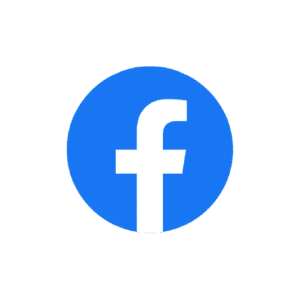 Buy Facebook Livestream ViewsFrom $4,99
Buy Facebook Livestream ViewsFrom $4,99 -
 Buy Facebook Group MembersFrom $1,99
Buy Facebook Group MembersFrom $1,99 -
 Buy Facebook Event JoinFrom $1,49
Buy Facebook Event JoinFrom $1,49 -
 Buy Facebook FollowersFrom $0,99
Buy Facebook FollowersFrom $0,99 -
 Buy Facebook Followers (profile)
Buy Facebook Followers (profile) -
 Buy Facebook Page LikesFrom $1,99
Buy Facebook Page LikesFrom $1,99 -
 Buy Facebook Post LikesFrom $0,99
Buy Facebook Post LikesFrom $0,99 -
 Buy Facebook CommentsFrom $1,99
Buy Facebook CommentsFrom $1,99 -
 Buy Facebook LikesFrom $1,99
Buy Facebook LikesFrom $1,99





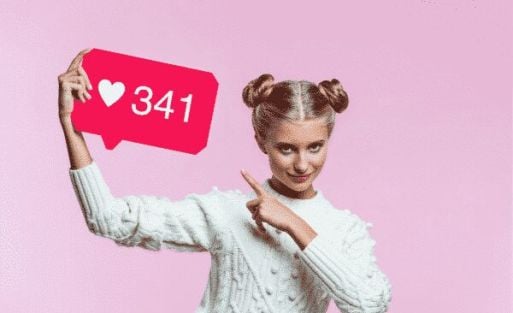


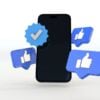




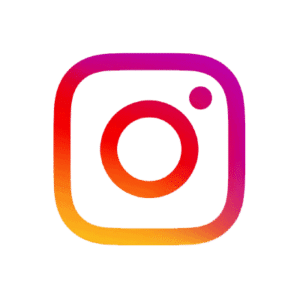
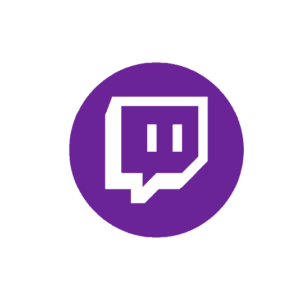

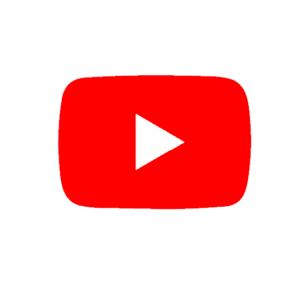
Add comment